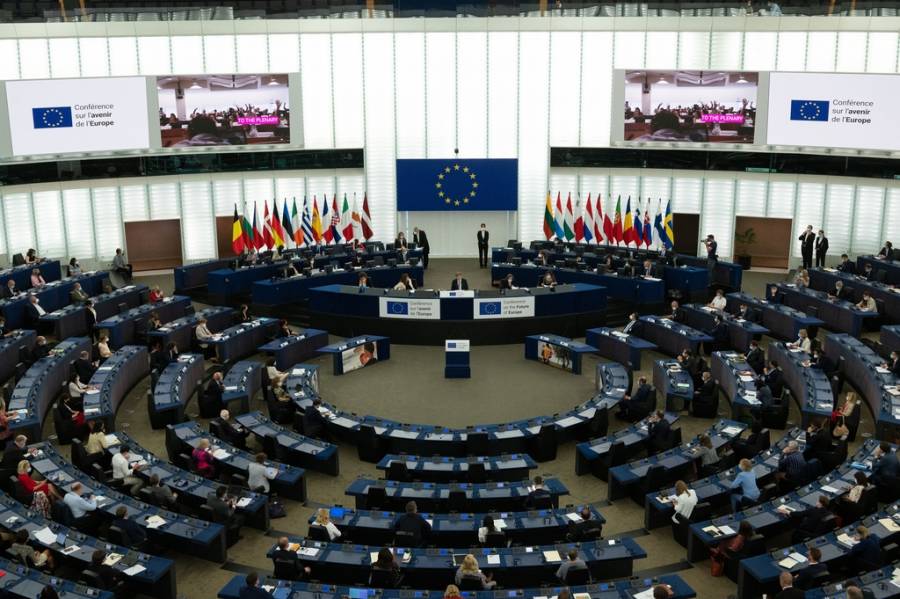The finding is the result of a survey conducted by the UNICEF Refugee Response Office in Poland, which also revealed that 53 per cent had considered getting, or had already accessed, mental health support since arriving in the country.
‘Not a surprise’
“The psychosocial toll of the war in Ukraine is immense so the results of this survey are not a surprise,” said Dr. Rashed Mustafa Sarwar, who heads the Office, which was established just weeks after the Russian invasion of Ukraine in February 2022.
Since then, more than four million Ukrainians have registered for temporary protection across Europe, UNICEF said. More than 1.6 million are in Poland, 90 per cent of whom are women and children, though overall refugee numbers could be much higher.
The survey used a World Health Organization (WHO) self-reporting questionnaire that measures psychological well-being through five simple, non-invasive questions.
Uncertainty and sadness
The results indicated that over 30 per cent of the mothers were exhibiting high levels of distress, and over 30 per cent were experiencing severe levels. Most said they felt helpless and had considered seeking help from a psychologist.
Among the issues contributing to their stress were uncertainty about the future, worries about family or friends in Ukraine or elsewhere, and sadness because of the war. High levels of distress were also related to practical concerns, including money, housing, jobs, language issues, access to healthcare and childcare.
Helping to heal
UNICEF has used the survey results to inform a nationwide online campaign in Poland targeting Ukrainian mothers with information on available psychological support, as well as coping strategies.
“Mental health and psychological support is vital to help families and children heal from the invisible wounds of war and that’s why it’s a huge part of our response and cuts across all of the work we do here in Poland,” said Dr. Sarwar.
Aid delivery in Ukraine
Meanwhile, humanitarians in Ukraine continue to assist frontline communities in the Kharkiv region in the east and the Kherson region in the south, where frequent bombardments are ongoing.
On Wednesday, an inter-agency convoy led by UN Humanitarian Coordinator in the country, Denise Brown, delivered aid to a community in the very east of the Kharkiv region, where more than 80 per cent of homes are damaged. Shelling also continues to interrupt water, gas, and electricity supply.
The convoy delivered shelter materials, hygiene supplies and solar lamps to some 1,000 remaining residents in a community that had 5,000 inhabitants in February 2022, said Stephanie Tremblay, a UN Spokesperson in New York, speaking on Friday.
“Today, another inter-agency convoy delivered critical aid – including shelter materials, food and water, solar lamps, hygiene kits and clothing – to support nearly 3,000 residents of another front-line community in the Kherson region,” she said. “Almost half of the remaining residents there are older people with limited access to most basic services.”
Landmine challenges
Humanitarians also warned that Ukraine is now one of the most mine-contaminated countries in the world, with Kharkiv and Kherson the most impacted regions.
Ms. Tremblay said nearly 300,000 hectares of agricultural land in Kharkiv alone needs demining, according to local authorities.
“Our humanitarian colleagues note that mine risks create additional challenges for repairing damaged houses and critical infrastructure and resuming farming, and both regions had large agriculture industries before the full-scale war,” she added.
Grain export update
Ms. Tremblay also provided an update on the Black Sea Grain Initiative, where operations are partially restarting.
Earlier this week, Russia confirmed that it will continue to take part in the UN-brokered agreement for a further 60 days.
The July 2022 deal allows for grain and other related foodstuffs to be shipped to global markets via three Ukrainian ports on the Black Sea. It is facilitated by the Joint Coordination Centre (JCC), which is based in Istanbul and staffed by representatives from Russia, Ukraine, Türkiye and the UN.
On Friday, the JCC registered six new vessels to participate, out of 15 applications. Three loaded vessels are currently preparing for inspection in Istanbul.
“No ships are currently though loading at any of the three Ukrainian ports under the terms of the Initiative. Teams from the Joint Coordination Centre checked and cleared today three new vessels to proceed to the ports of Odesa and Chornomorsk,” Ms. Tremblay told journalists.
She said the UN “continues to call for the prompt return to a tempo of operations that makes full use of the capacities of the three ports and the Joint Coordination Centre teams.”















